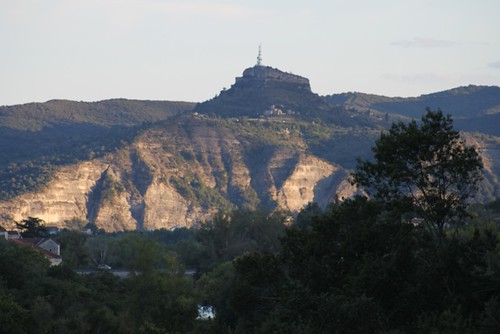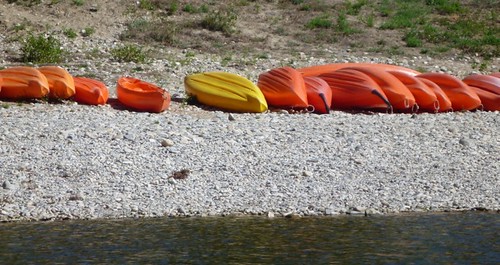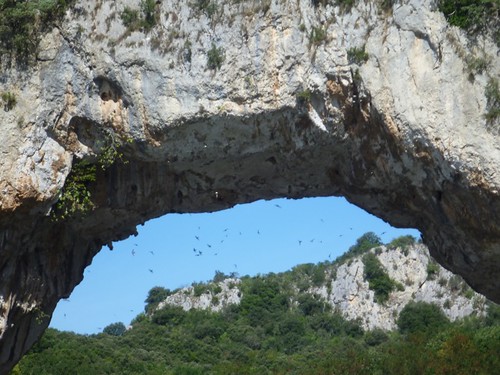The Ardèche Wild And Beautiful
If you want to feel like you have experienced a bit of Corsica without leaving the French mainland, plan a trip to the Ardèche region.
The similarities between the beautiful island of Corsica and the Ardèche are significant. In both cases, the area is sparsely populated and the economies are heavily dependant on agriculture and tourism. The permanent population of both the island of Corsica and the Ardèche is just slightly over 300,000. However, during the peak holiday season the local population swells as the number of visitors ranges between two and three million annually.
The Ardèche area is bordered by the Rhone River on the east side and crossed by significant waterways, including the Loire and the Ardèche Rivers. The region is filled with stunning views, local products and extremely intriguing places to visit.
Not far off the beaten path but a world apart, a traveller can quickly leave the bustling traffic behind. The landscape at the northern end of the Ardèche region is dense forests of oak, pine and chestnut. The roads are small and winding, much like in Corsica. Small hamlets dot the landscape along with fields of cows. The architecture in the northern Ardèche is stern, with buildings of stone blocks and pitched roofs to keep out the elements; no fanciful Provençal colours in this area.
Man has occupied the region for 350,000 years, since Middle Paleolithic times. We visited l’Aven d’Orgnac, classified as a Grand Site de France. This living museum covers 30,000 square meters. Robert de Joly discovered the cave in 1935. He and his party entered the natural opening to the cave and descended 50 meters, in the dark, to the first level of the cave, the first known humans to have done so. The site has been open to the public since 1939. Today, visitors can visit the cave by a guided tour, to the depth of 120 meters. The natural stalactite and stalagmite formations continue to evolve, in the same fashion they always have.
Most likely, the biggest tourist attraction in the region is the Gorges de l’Ardèche: The river has cut a path over millions of years through the limestone creating the canyon that exists today. Starting at Vallon Pont d’Arc, it is possible to float (canoes or kayaks) or drive to St Martin d’Ardèche a distance of approximately 32 kilometers. One of the most popular sites along the way is the natural bridge, the Pont d’Arc.
As the oaks and pines give way to the plane and fig trees, the southern architecture becomes more Provençal. Enormous wine fields and vistas of Mt Ventoux replace the milk cows and chestnut trees. There is much to see and do in the beautiful Ardèche: forty heritage villages, the birthplace of hot air ballooning, hiking, biking, grottos, and plenty of history.
Image credits
1, 2, 3 © Carolyne Kauser- Abbott










I’ve just had a look on the Internet about this cave you are talking about: l’Aven d’Orgnac. This site must be really impressive from what we can see on the pictures!
Thank you for this article and for showing us how beautiful this region is! 🙂
l’Aven d’Orgnac is definitely impressive, a true example of natures’ mysterious forces. The Ardèche is a marvel to be discovered.